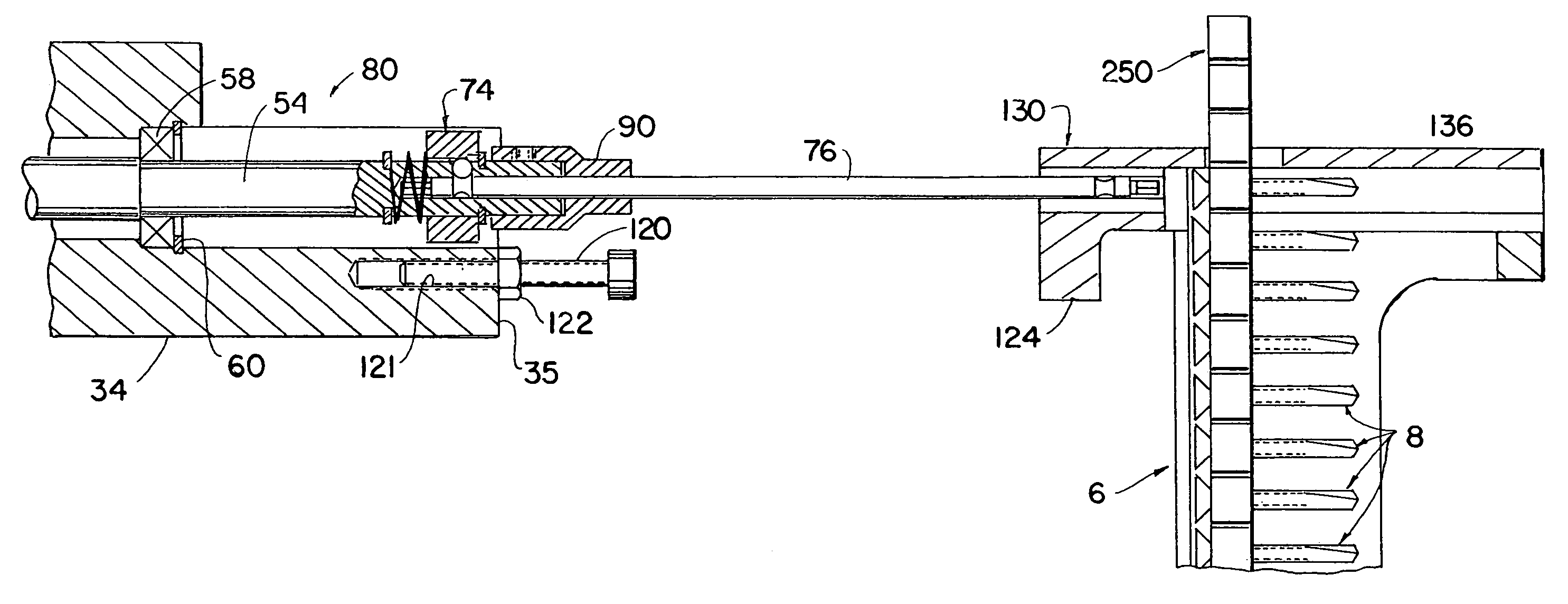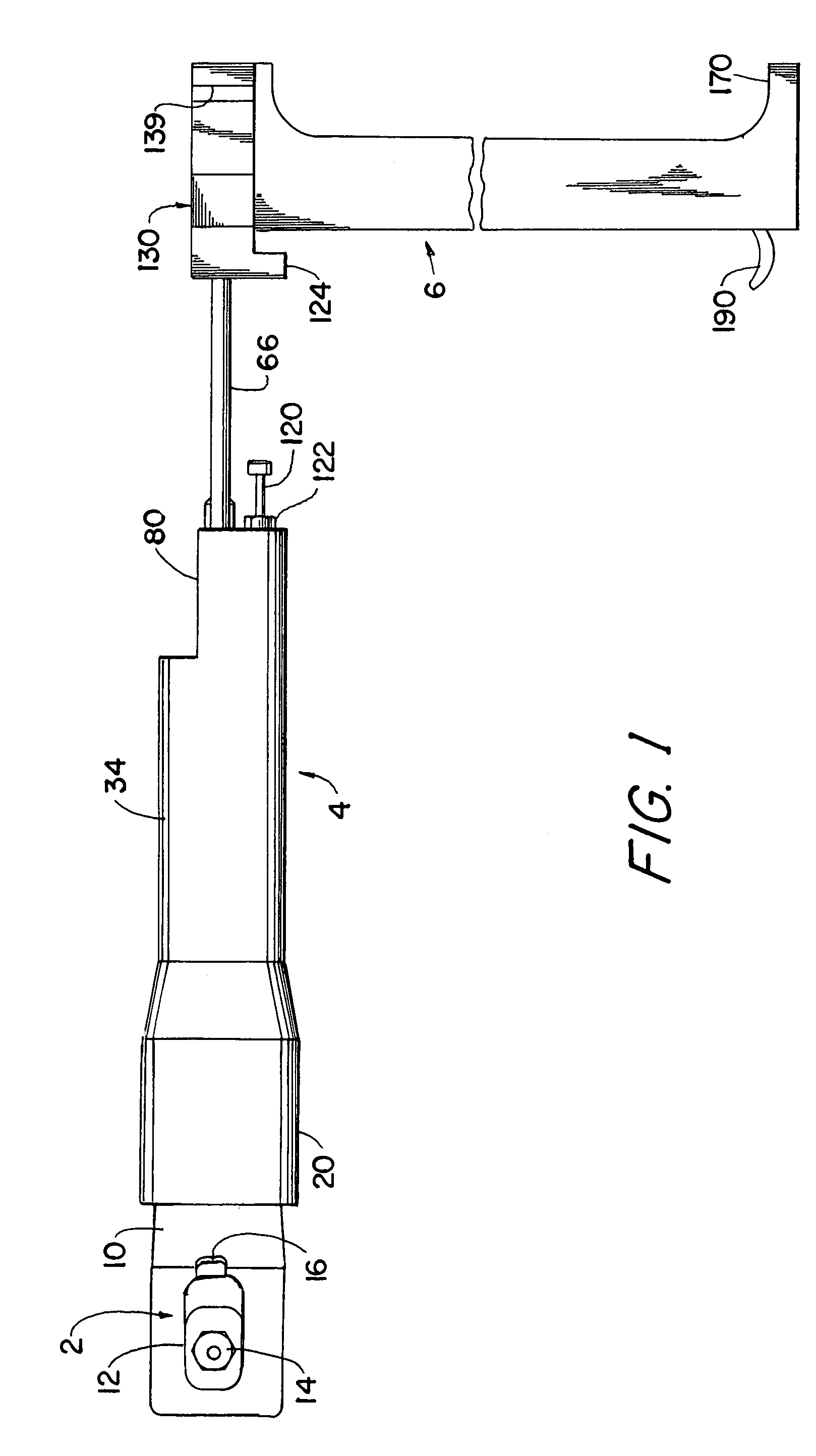Method and apparatus for fastening together structural components
a technology of structural components and fasteners, applied in the direction of threaded fasteners, screwdrivers, manufacturing tools, etc., can solve the problems of high impact produced by such drivers, inability to easily penetrate steel framing members, and inability to attach hard wood flooring to steel framing, etc., to achieve the effect of reducing user fatigue in the operation of the apparatus
- Summary
- Abstract
- Description
- Claims
- Application Information
AI Technical Summary
Benefits of technology
Problems solved by technology
Method used
Image
Examples
Embodiment Construction
[0041]Referring to FIGS. 1 and 2, the illustrated apparatus includes and utilizes a conventional pneumatically-powered rotary impact driver 2 that preferably, but not necessarily, is adapted to operate in both forward and reverse directions. Such tools, commonly known as rotary impact wrenches, are made and sold by numerous companies and their construction is exemplified by the devices shown in the following U.S. Pat. No. 2,463,656, issued 8 Mar. 1949 to F. H. Thomas; U.S. Pat. No. 3,428,137, issued 18 Feb. 1969 to R. J. Schaedler et al; U.S. Pat. No. 4,347,902, issued 7 Sep. 1982 to W. K. Wallace; U.S. Pat. No. 4,951,756, issued 28 Aug. 1990 to R. J. Everett et al; U.S. Pat. No. 5,083,619, issued 28 Jan. 1992 to D. A. Giardino; U.S. Pat. No. 5,320,187, issued 14 Jun. 1994 to J. Pressley; U.S. Pat. No. 5,622,230, issued 22 Apr. 1997 to D. A. Giardino; and U.S. Pat. No. 5,906,244, issued 25 May 1999 to S. C. Thompson. However, for the purposes of this invention, the tool must be of t...
PUM
| Property | Measurement | Unit |
|---|---|---|
| yield strength | aaaaa | aaaaa |
| tensile strength | aaaaa | aaaaa |
| angle | aaaaa | aaaaa |
Abstract
Description
Claims
Application Information
 Login to View More
Login to View More - R&D
- Intellectual Property
- Life Sciences
- Materials
- Tech Scout
- Unparalleled Data Quality
- Higher Quality Content
- 60% Fewer Hallucinations
Browse by: Latest US Patents, China's latest patents, Technical Efficacy Thesaurus, Application Domain, Technology Topic, Popular Technical Reports.
© 2025 PatSnap. All rights reserved.Legal|Privacy policy|Modern Slavery Act Transparency Statement|Sitemap|About US| Contact US: help@patsnap.com



